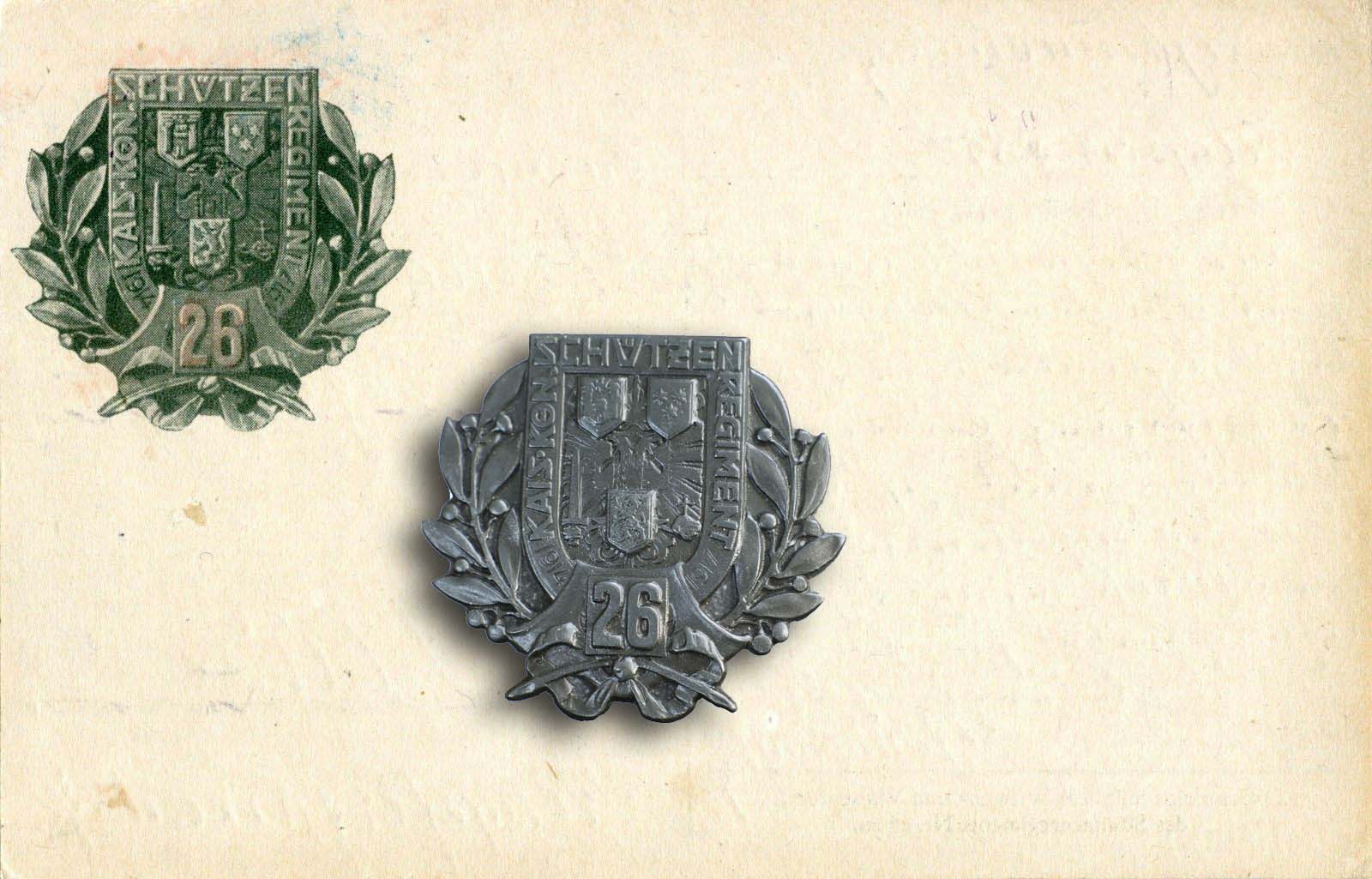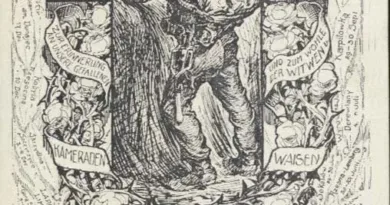26. Schützen Regiment
In the Austrian provinces of the Monarchy regiments of territorial forces were called Landwehr regiments. During the Great War, they were renamed rifle regiments (Schützen). It is not clear to me the reason for this name change, in any case the badges of the 26th Rifle Regiment were designed with this name, not Landwehr. This refers to the date the badges were made, which occurred after the renaming.

Like the Honvéd regiments of the Kingdom of Hungary, the Landwehr / Schützen regiments received the same training as the regular “common” regiments. They were completely equivalent in war. The 22nd Rifle Division was part of the 26th Regiment and turned up in many dangerous battlefields. Until August 1915 on the eastern front they were part of the III. corps deployed around Kolomea. Already at the end of the 2nd Isonzo battle, they marched to the Italian front, on the border with Carinthia, to replace the regiments that had weakened in the fighting. In the 3rd Battle of Isonzo, in the fall of 1915, the regiment moved to the Carst Plateau to the VII. corps. Also later they fought in Tyrol and in the Isonzo valley, always under difficult conditions.

In 1917, they took part in the general attack launched on October 24, which broke through Italian lines of defense. The regiment was active in the main offensive area in Flitsch (Bovec) and was part of the decisive breakthrough. Subsequently, Italian troops were withdrawn everywhere along the Isonzo. The retreat could only be stopped along the Piave river 100 kilometers to the west after the arrival of English troops. A badge of the 26s preserves the memory of this attack. Its caption is “Immer wie bei Flitsch!”, Meaning “Always like at Flitsch!”
The 26 shooters were recruited in eastern Styria, so they were Slovenian and German-speaking soldiers. The center of the regiment was the city of Marburg (Maribor).




